Vivian Browne
b. 1929 Laurel, FL – d. 1993 New York, NY
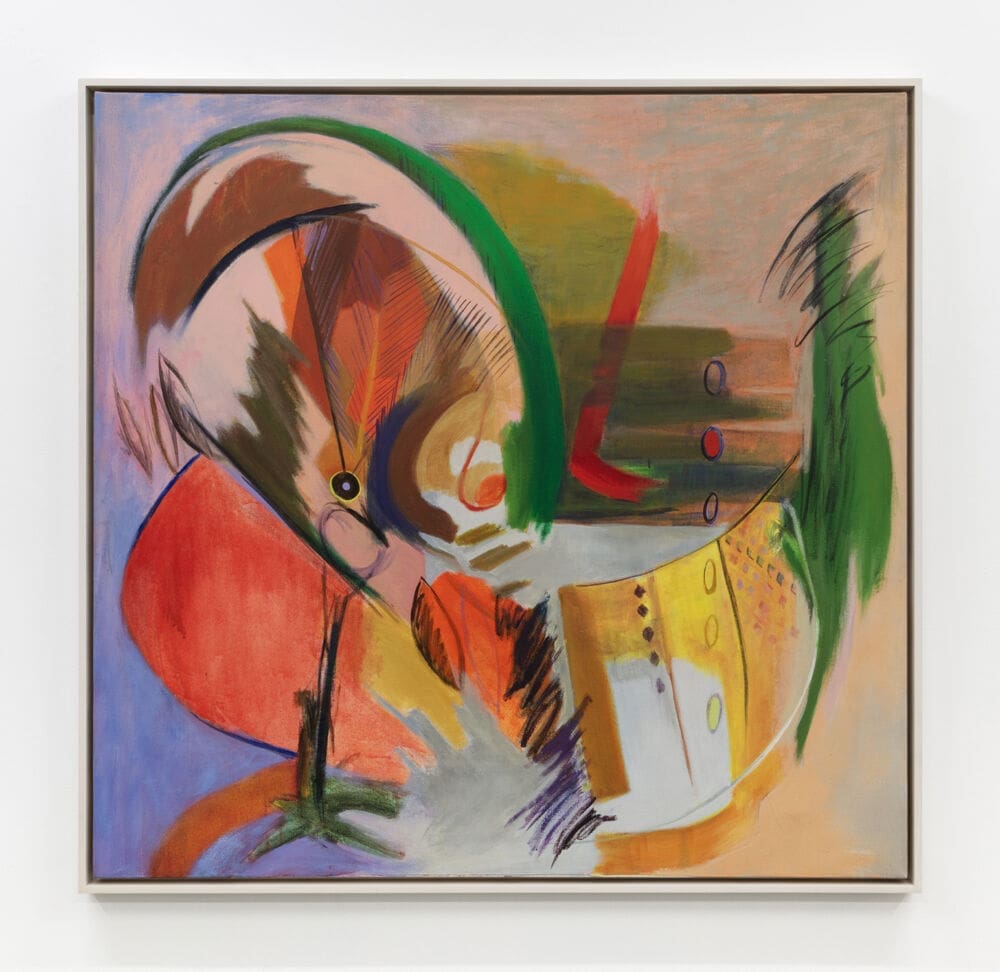
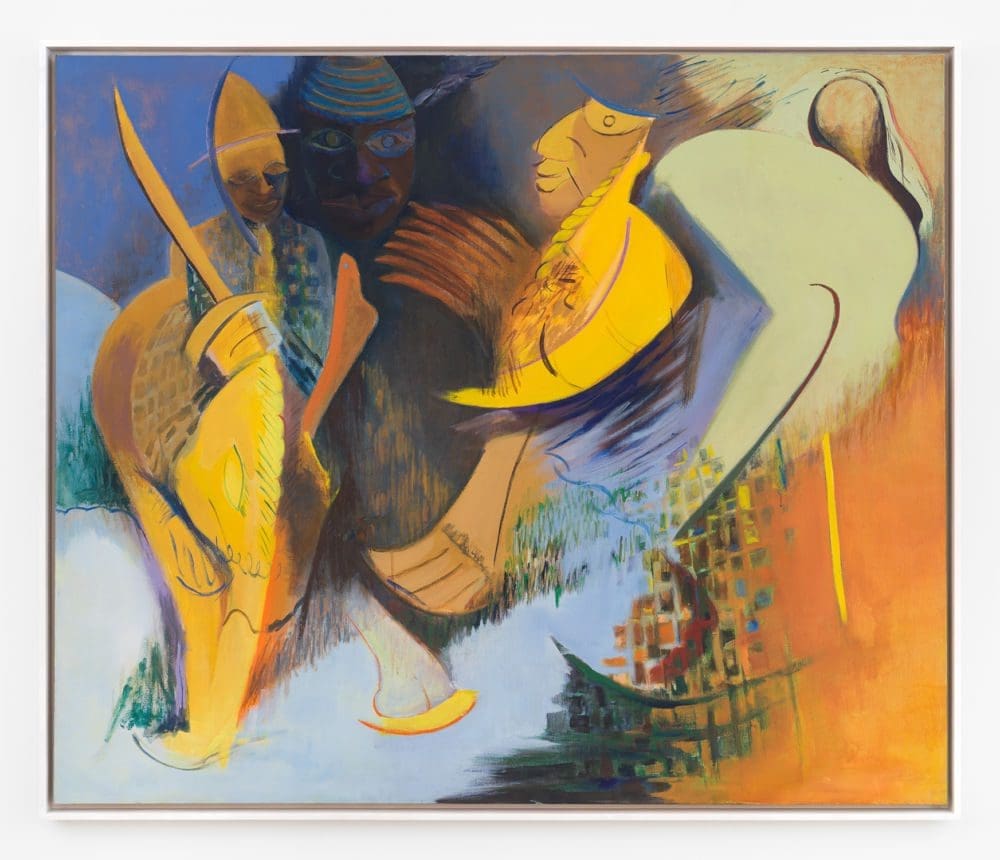

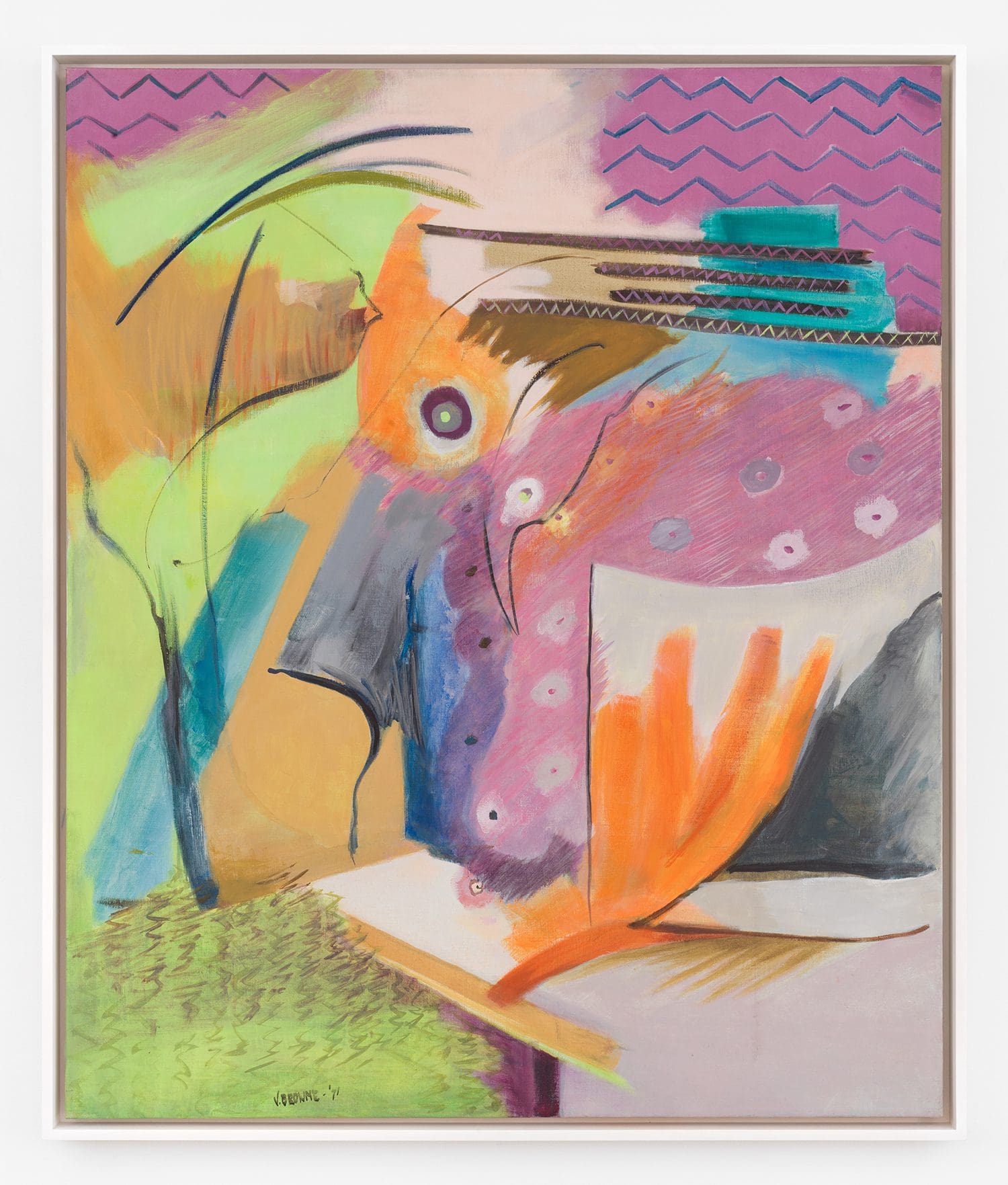
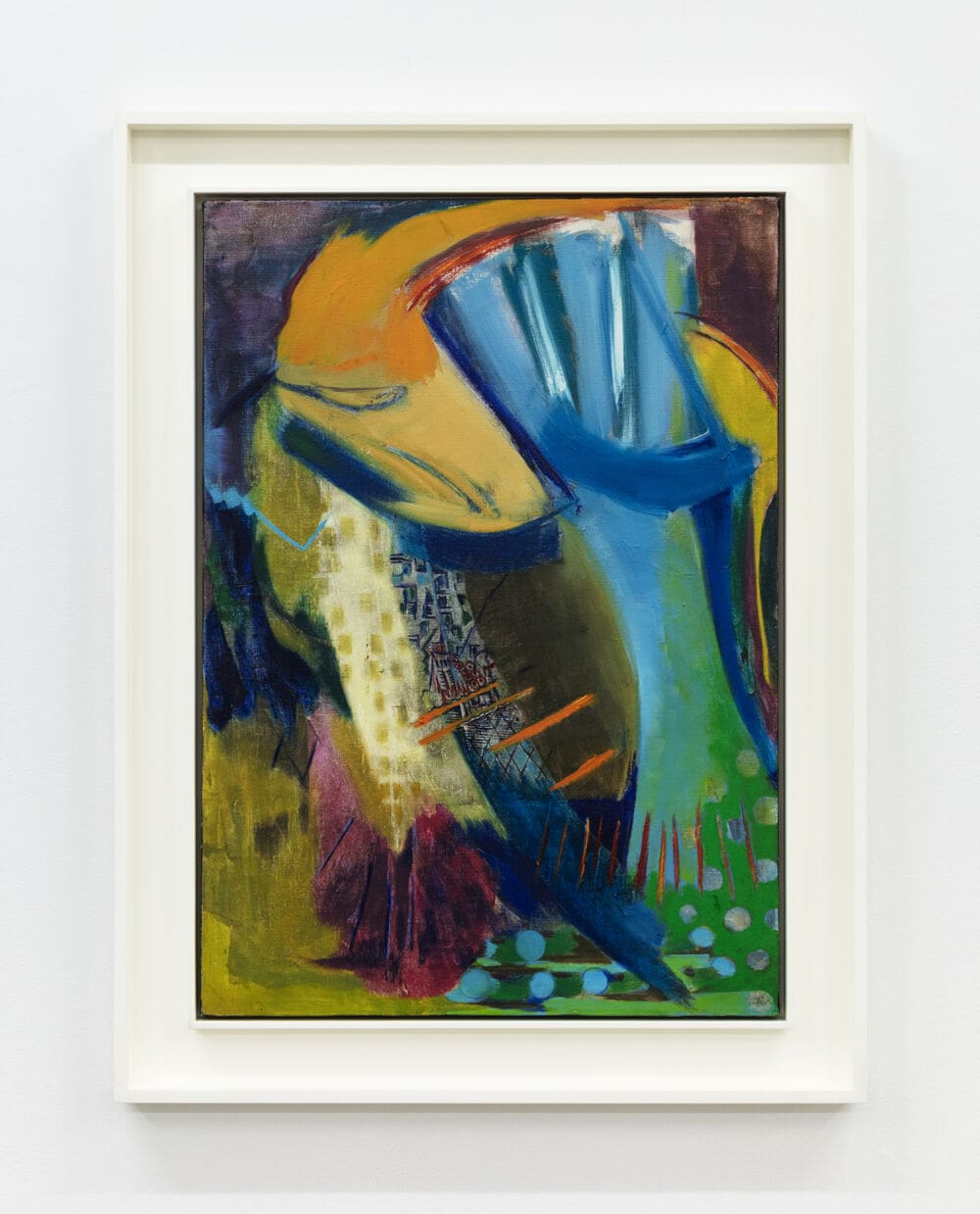
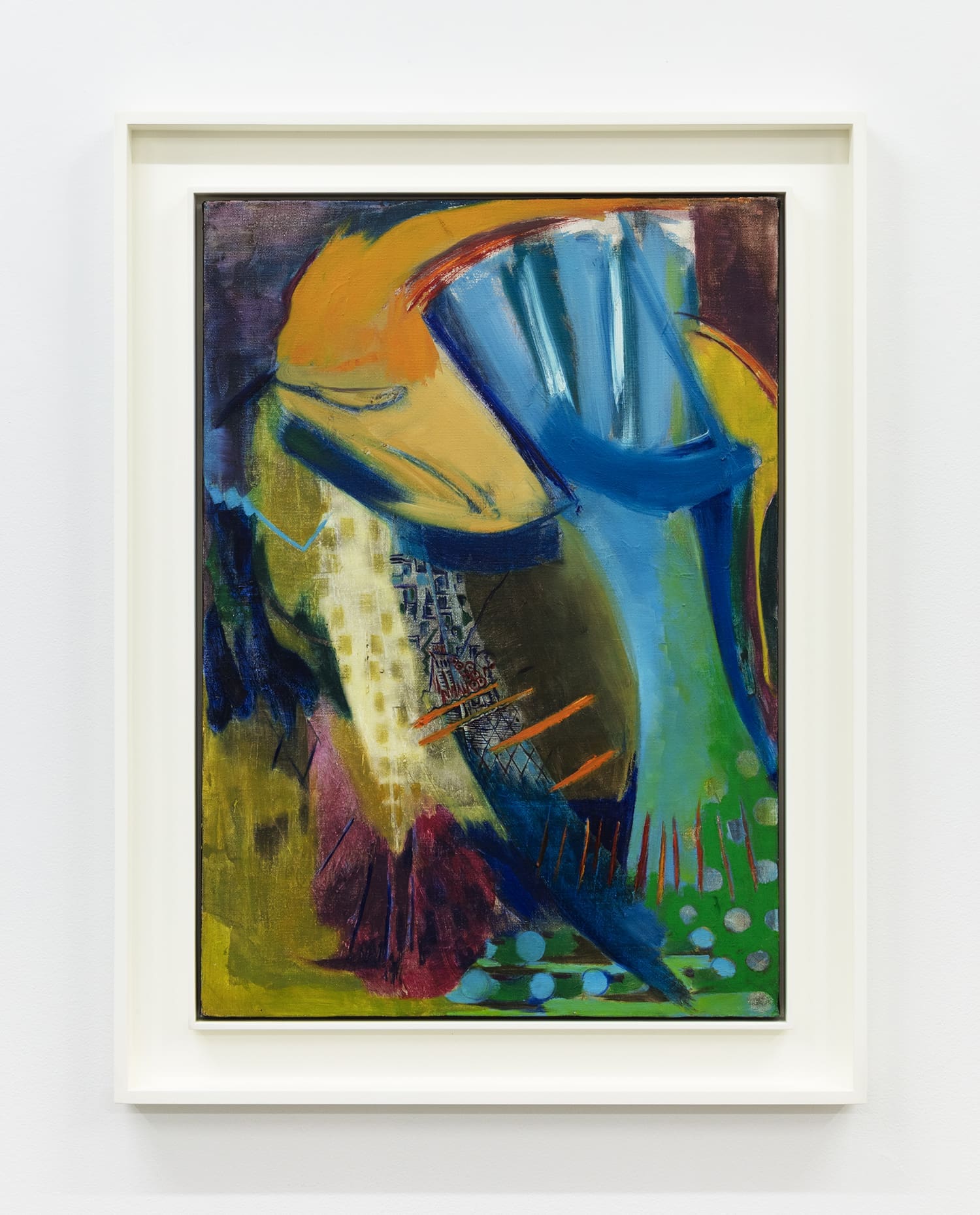

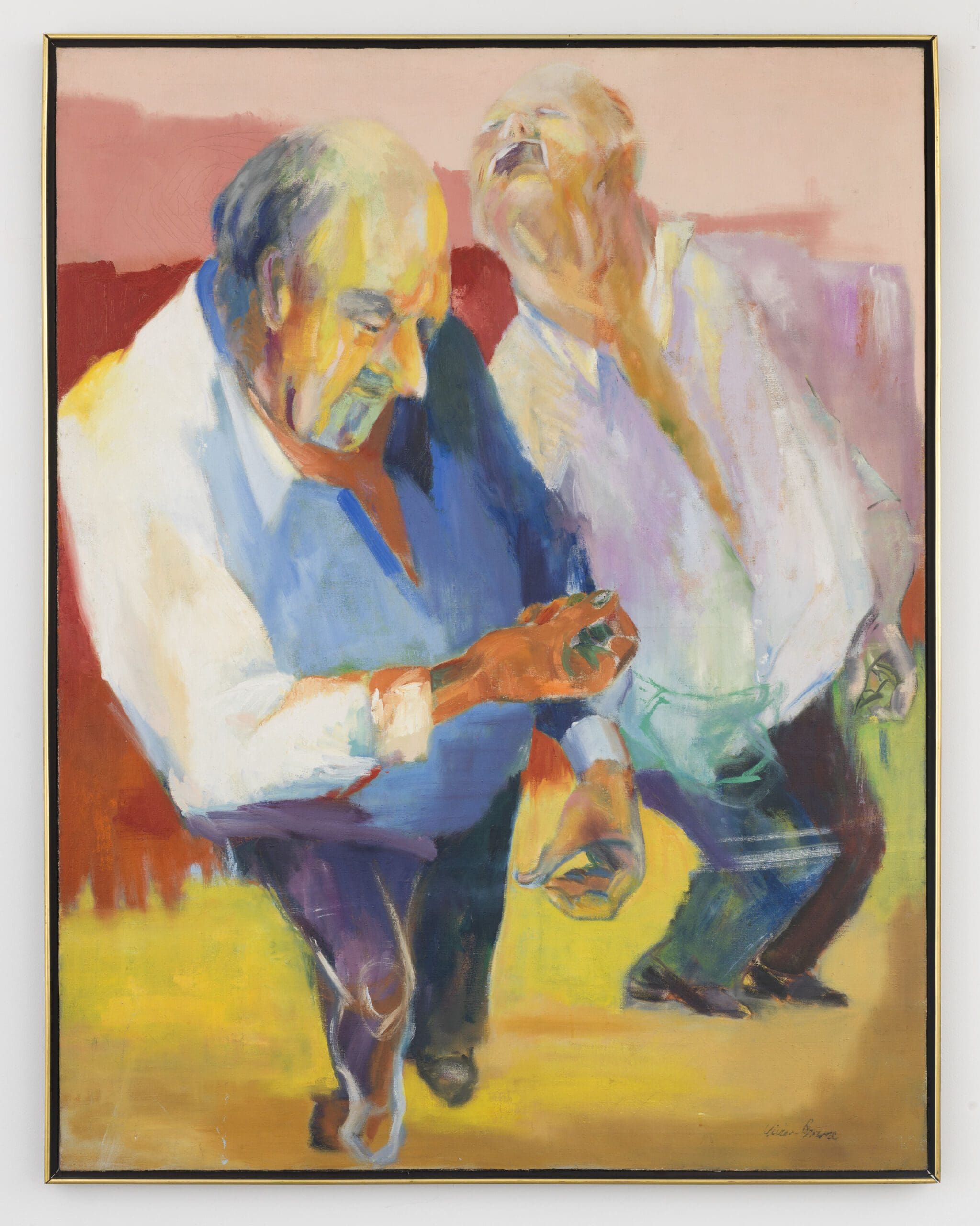
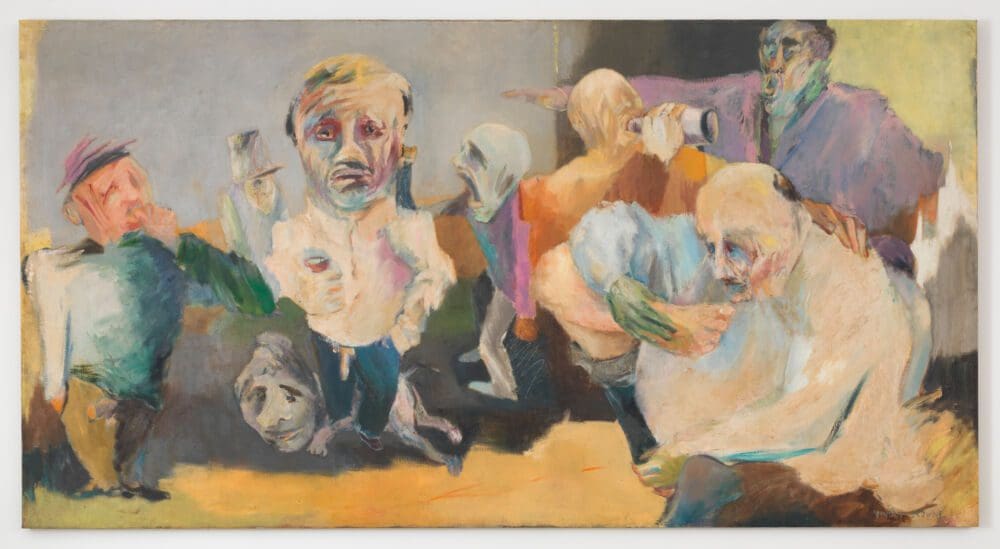
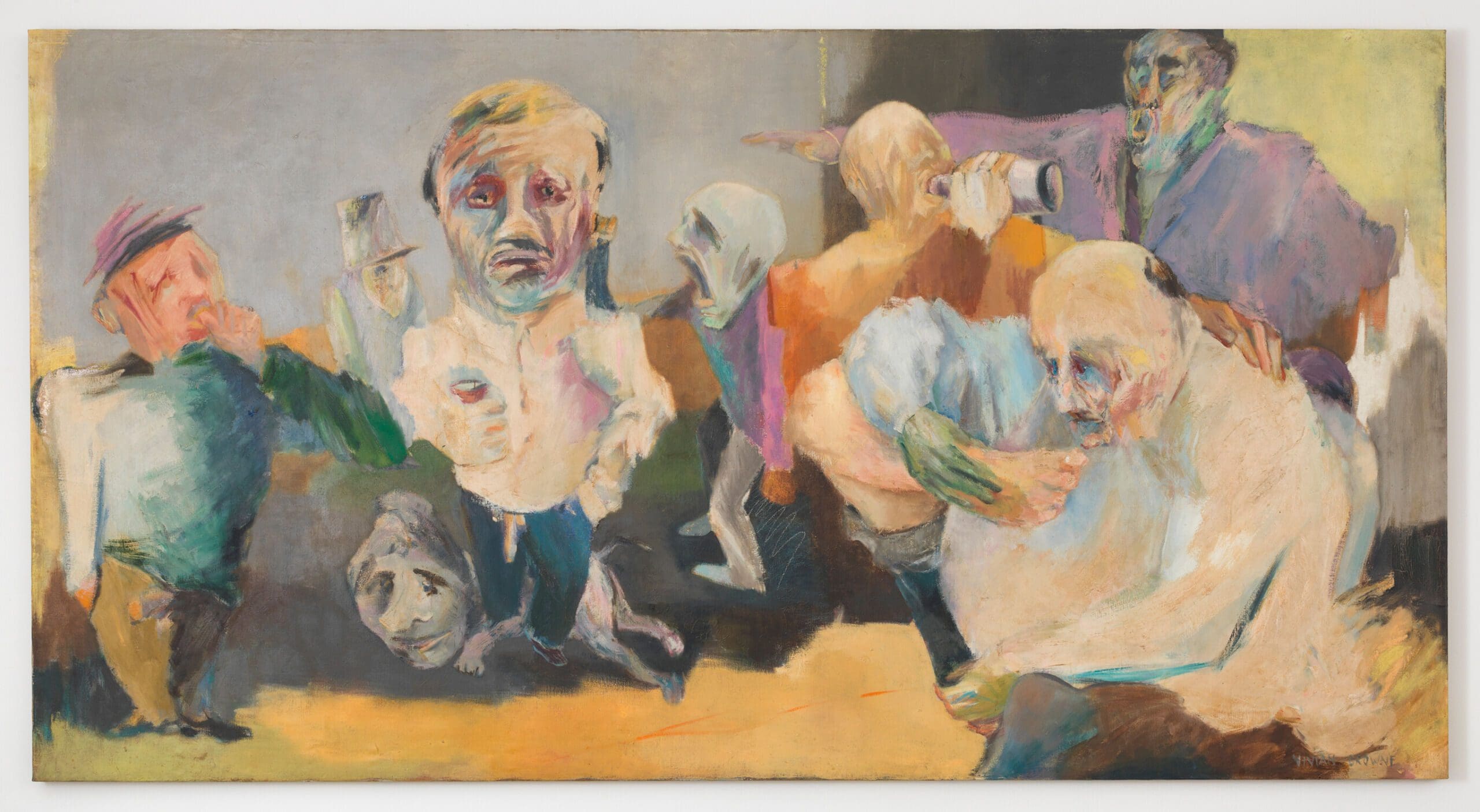
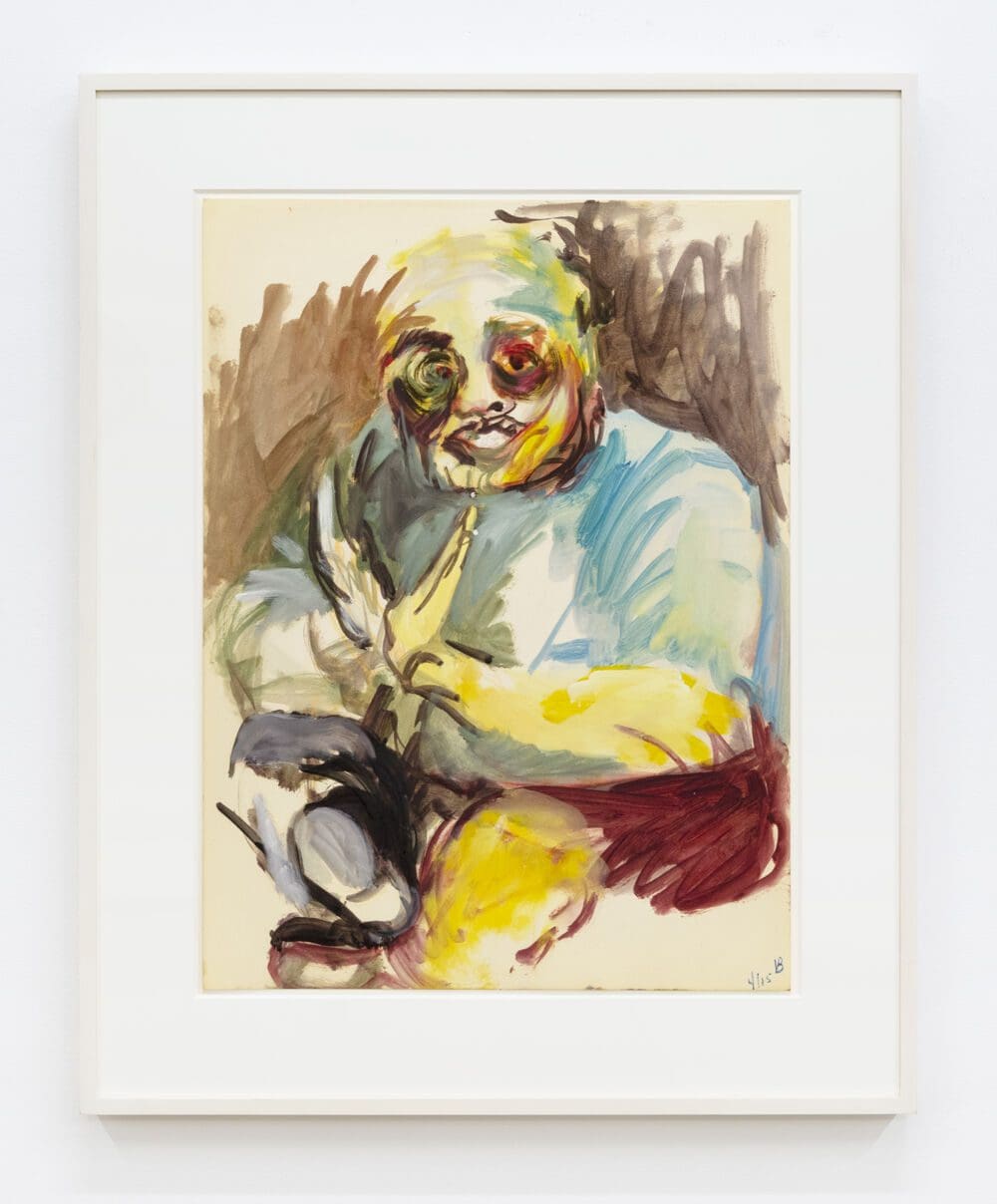
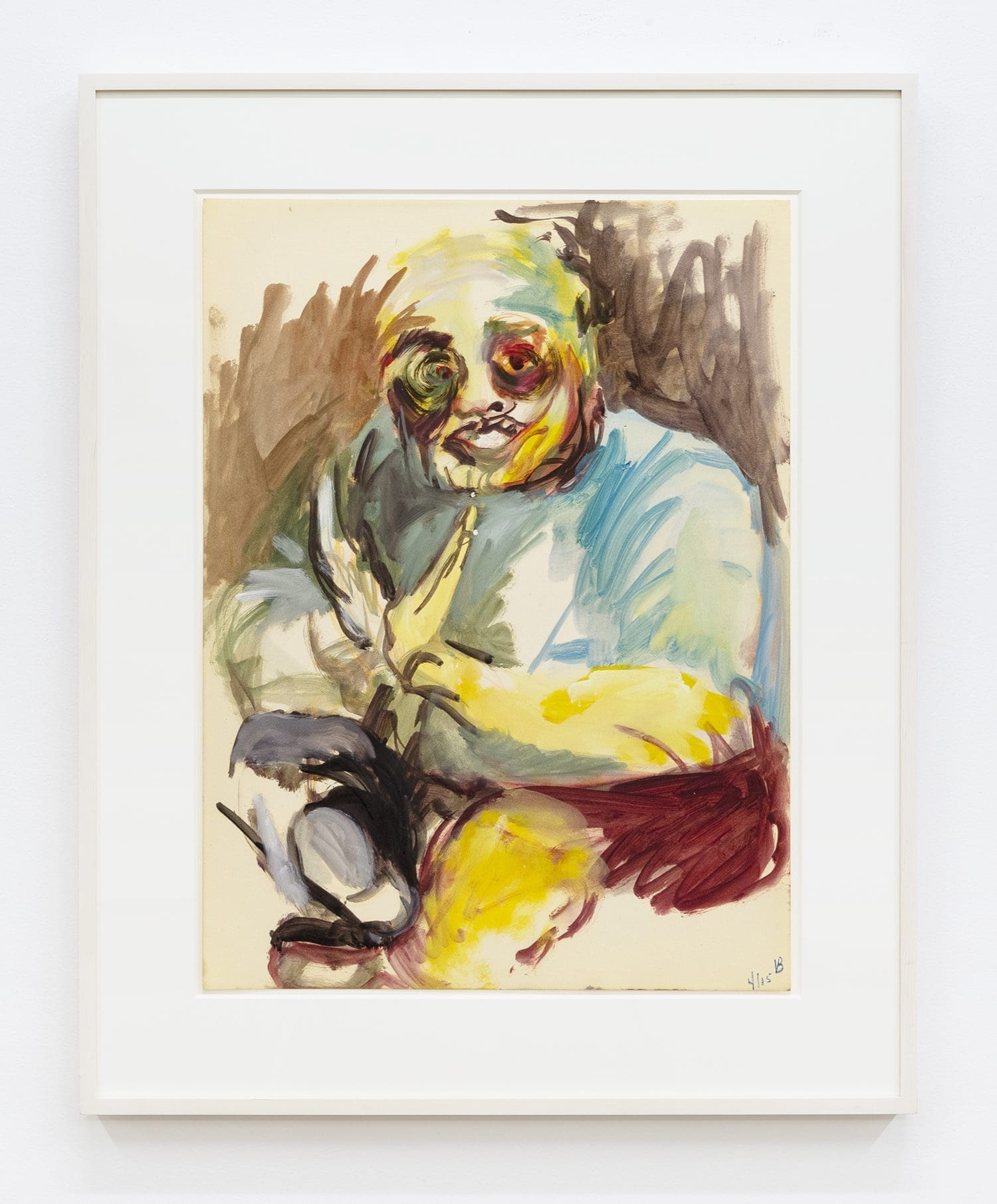
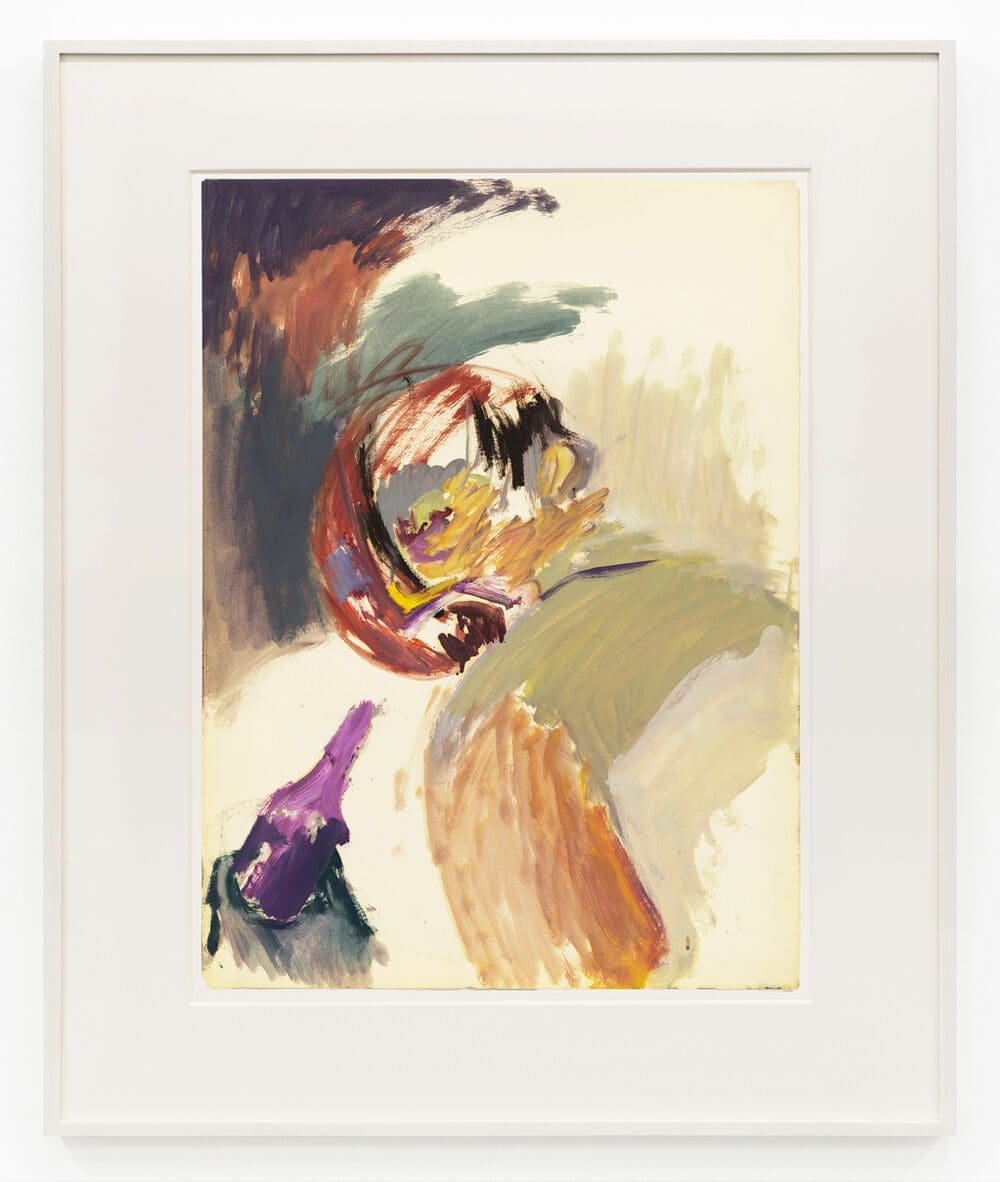

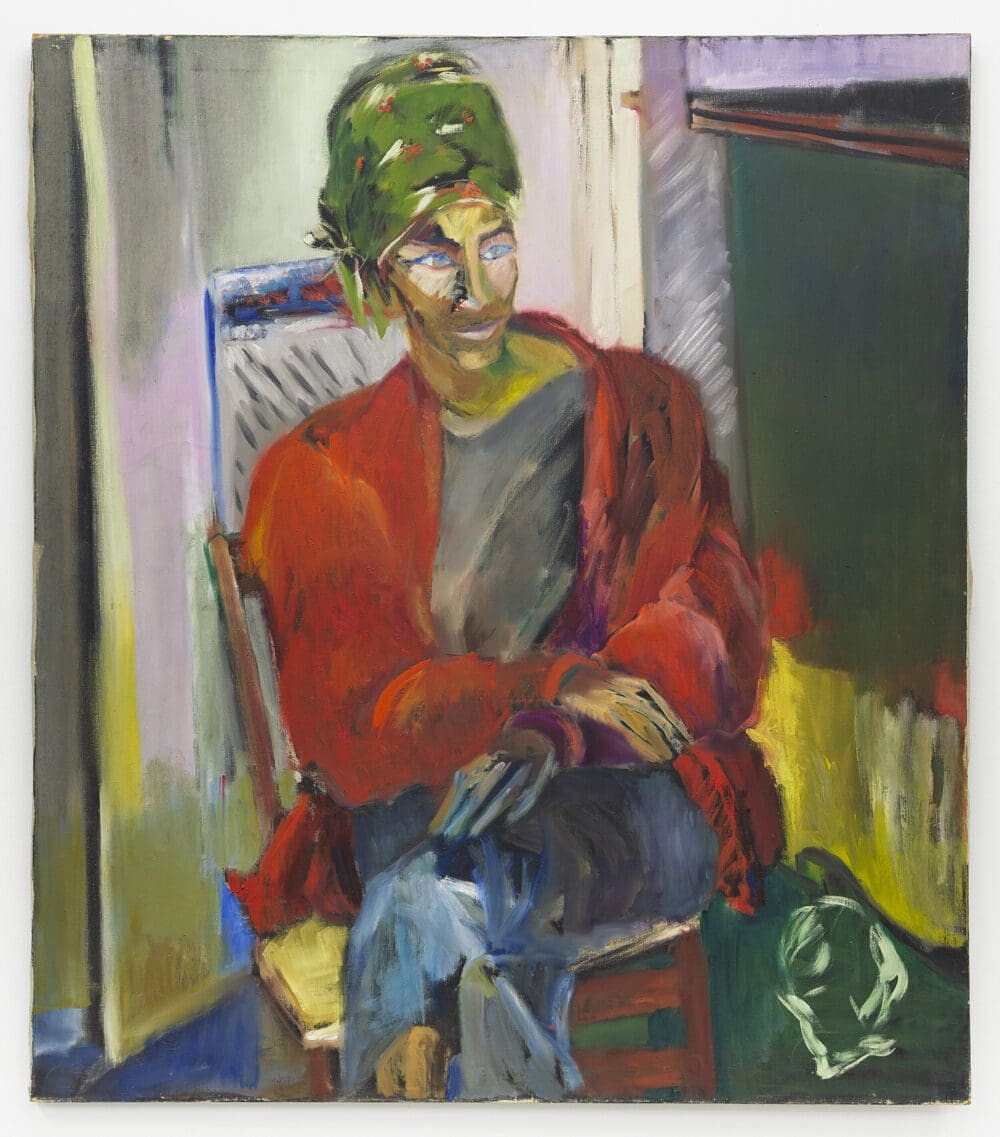
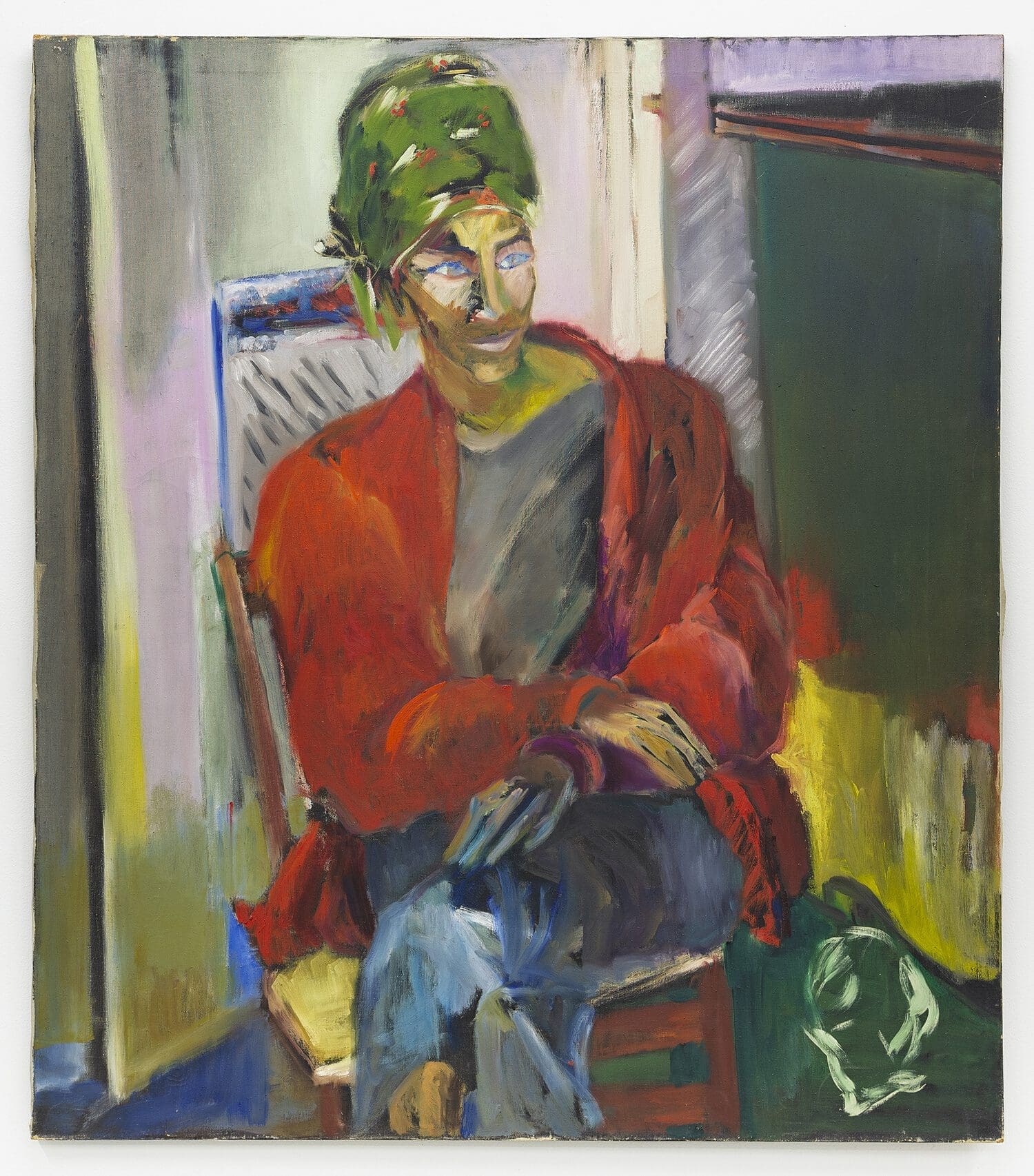
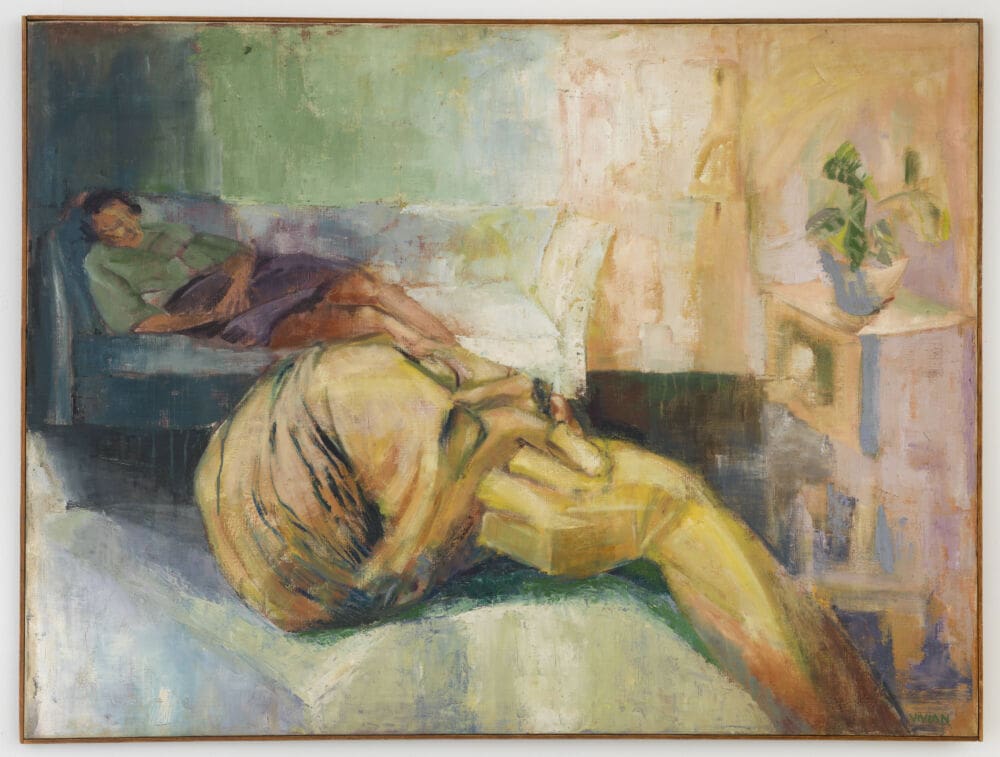
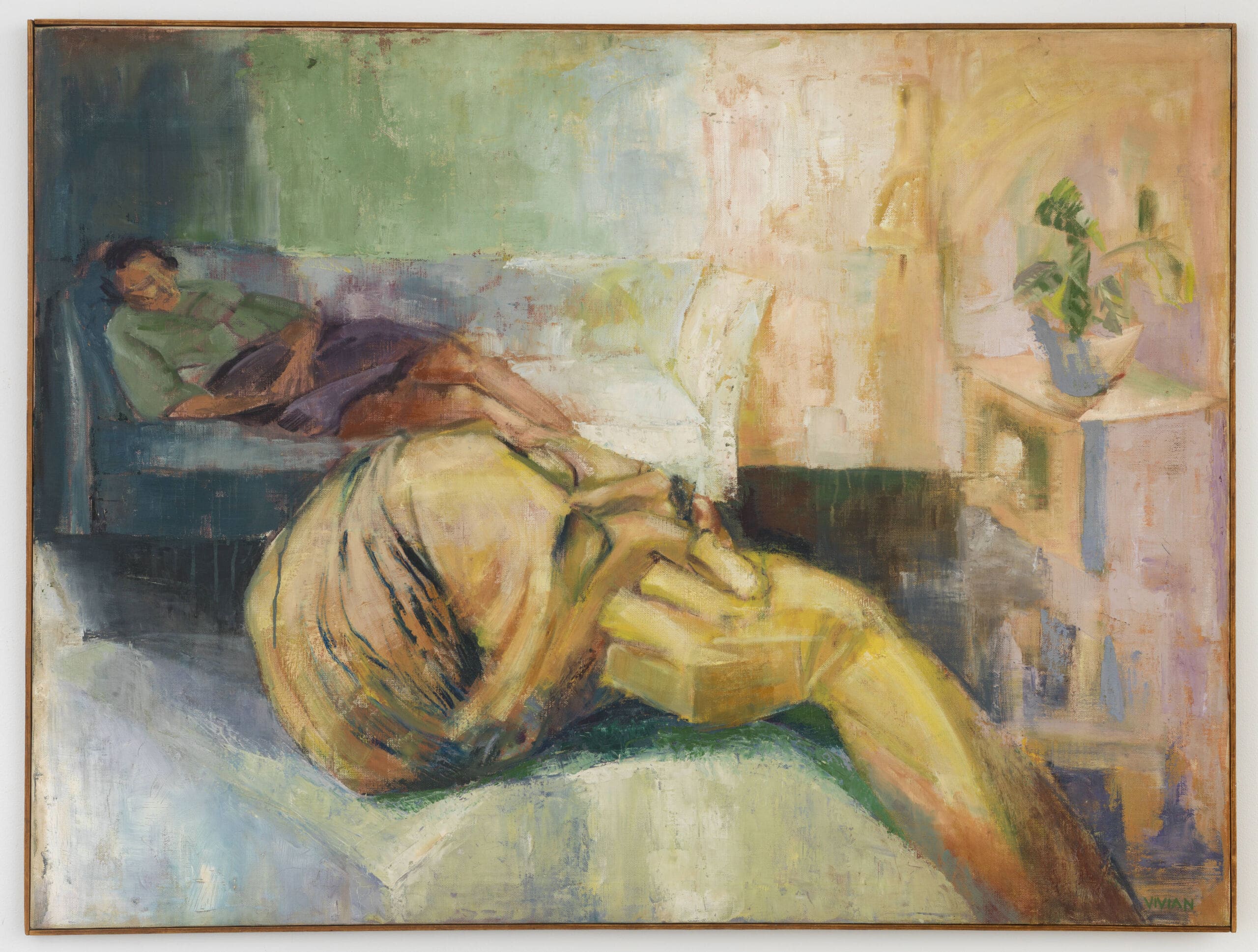
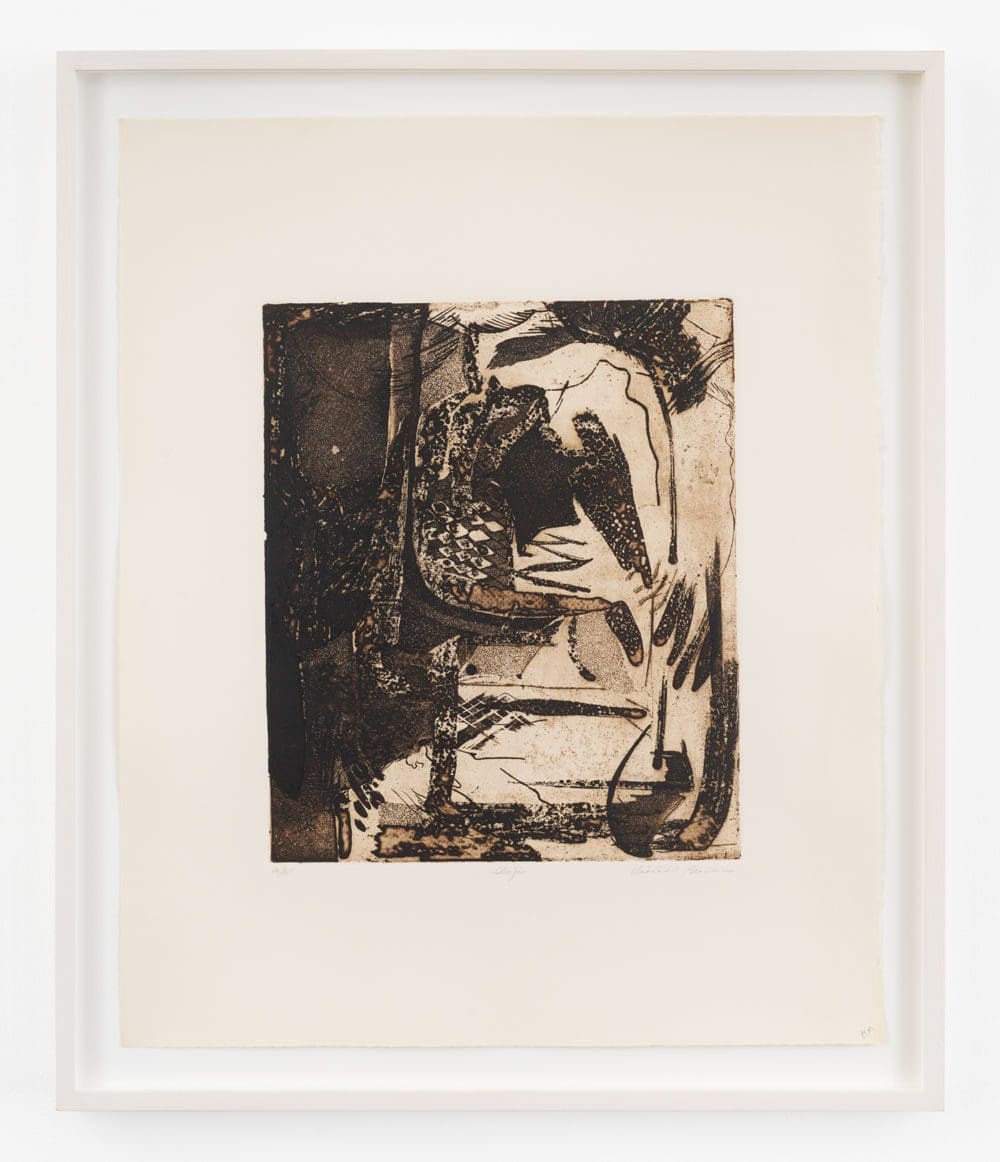
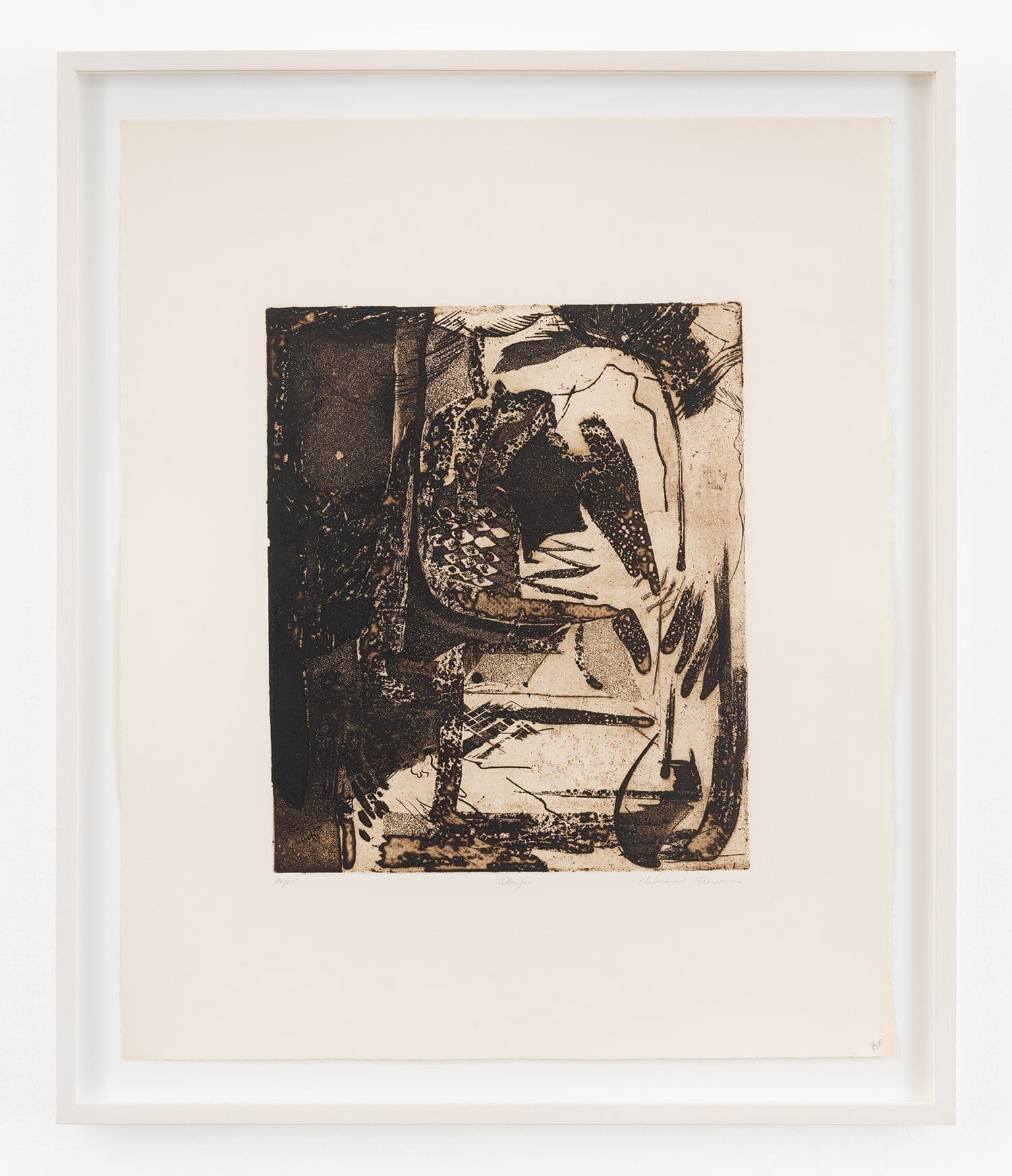
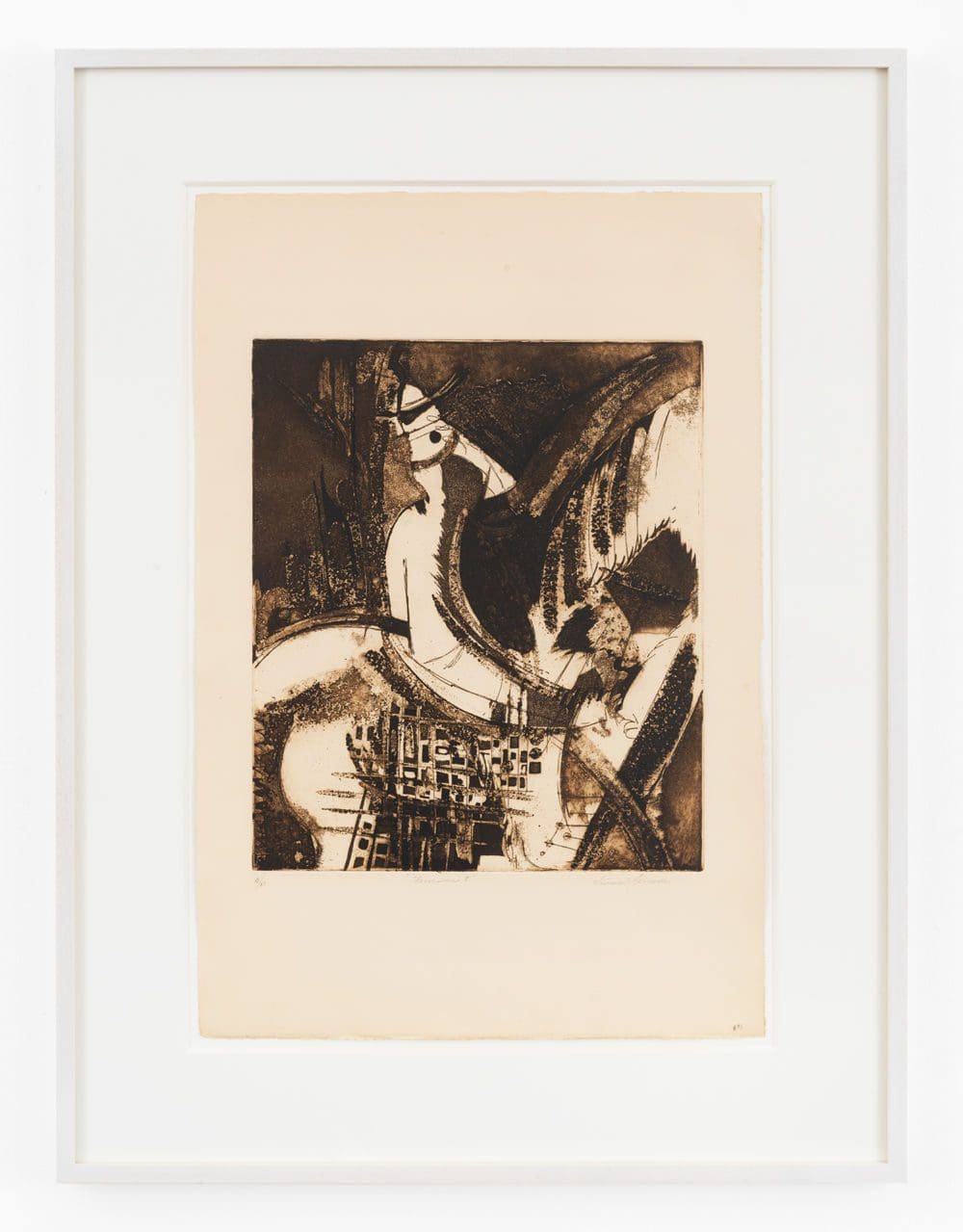

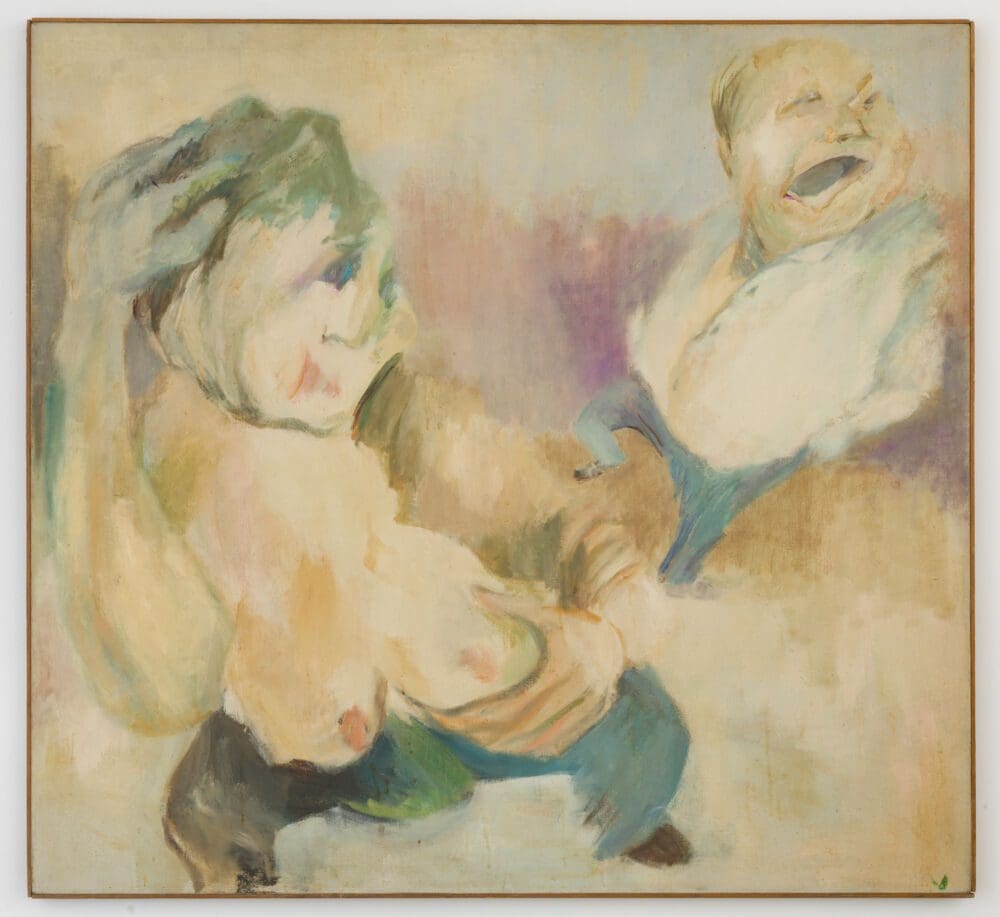
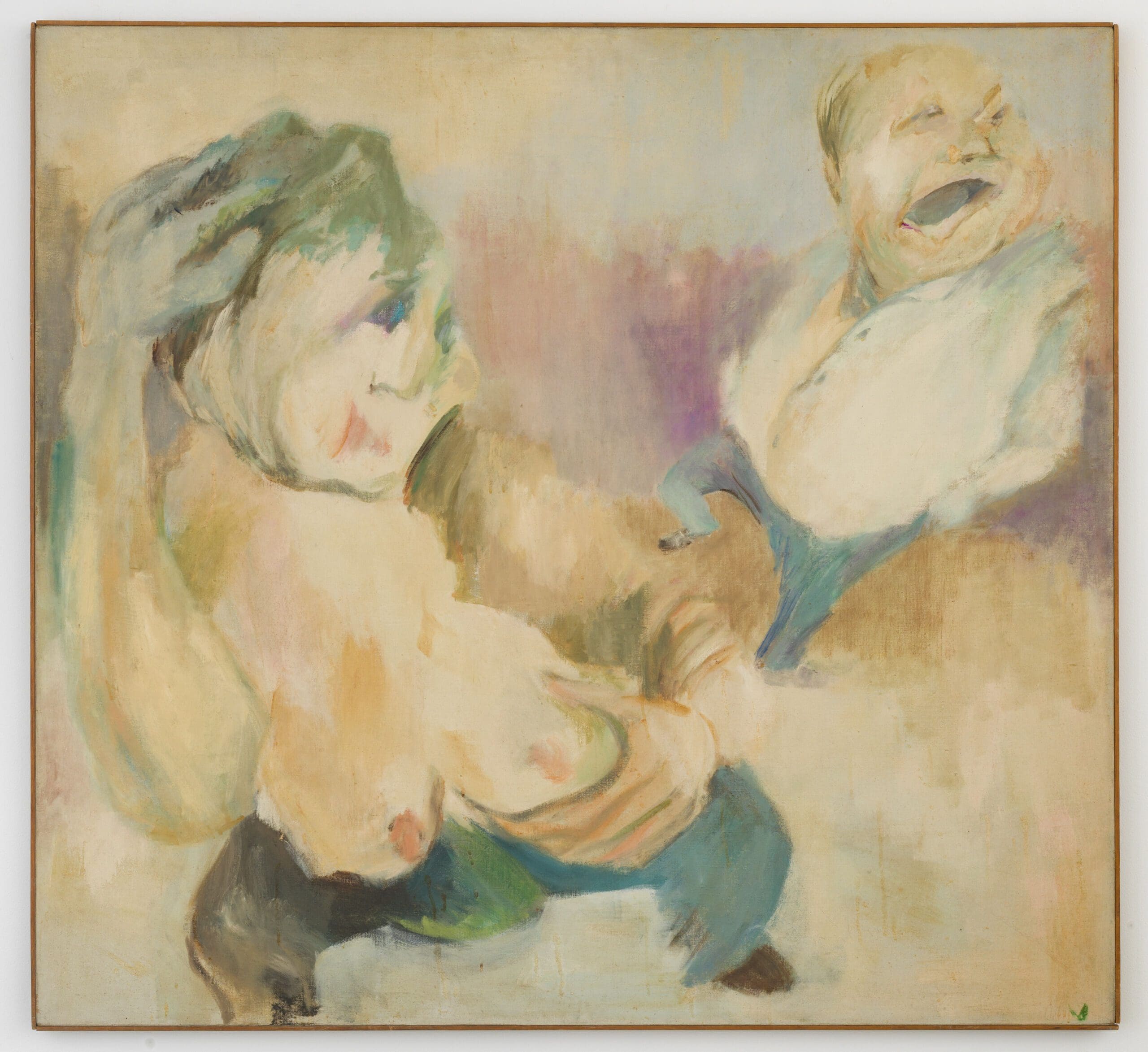
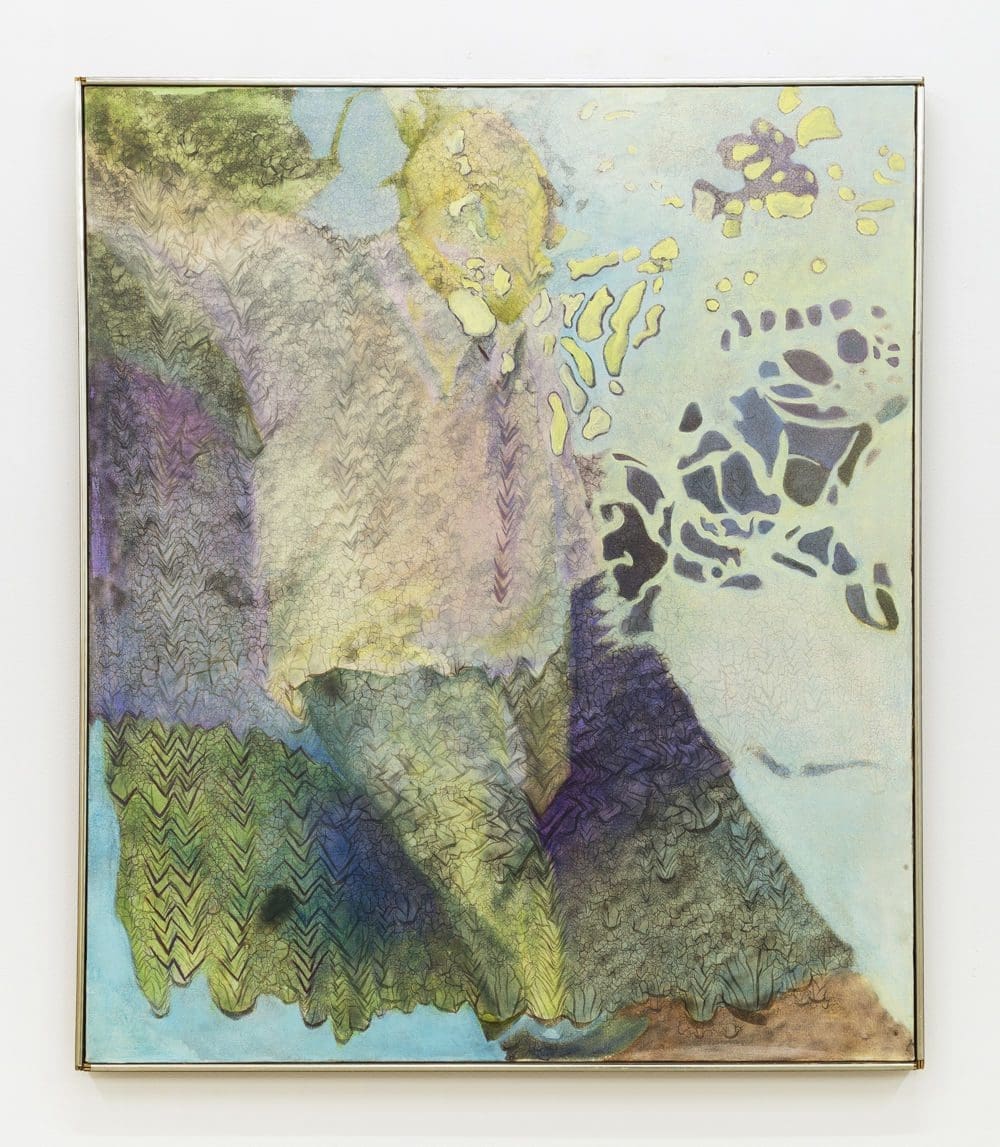
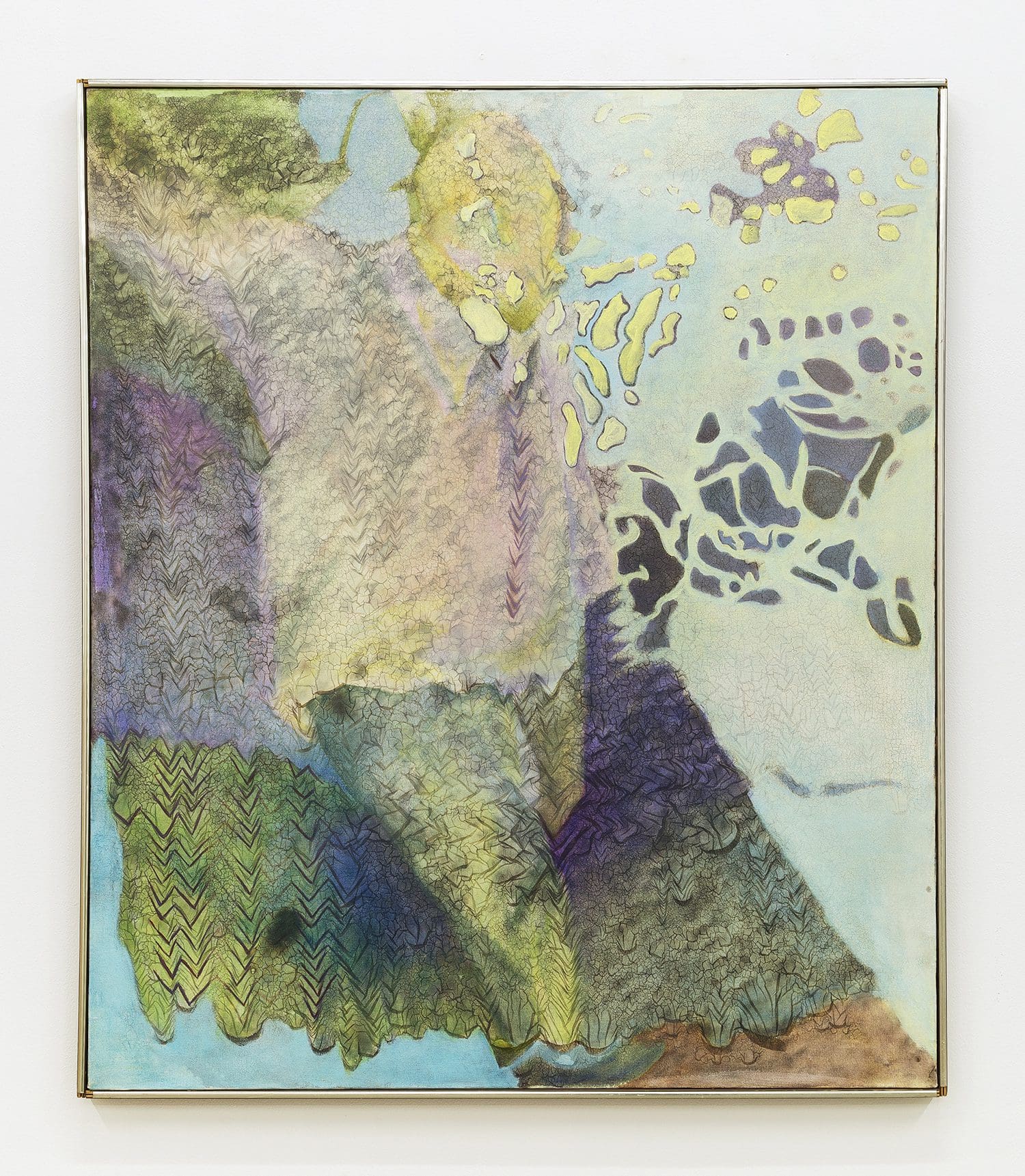
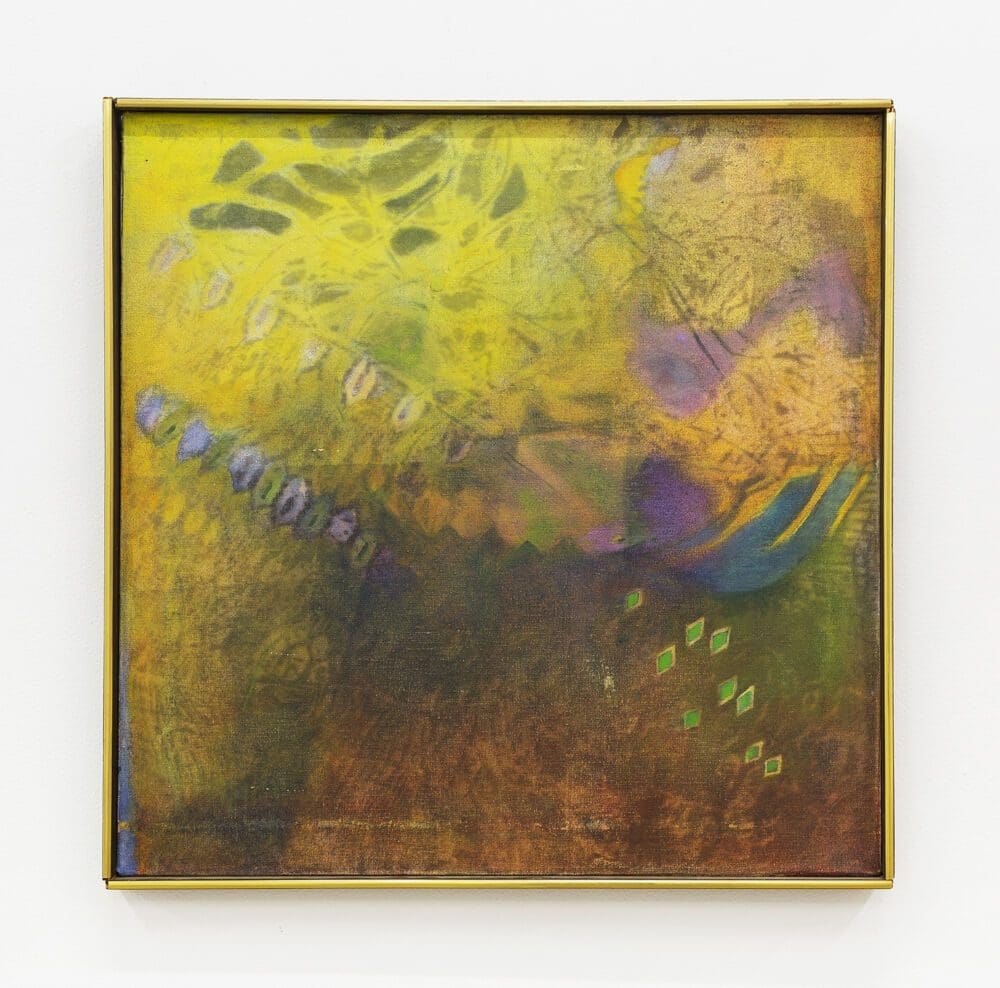
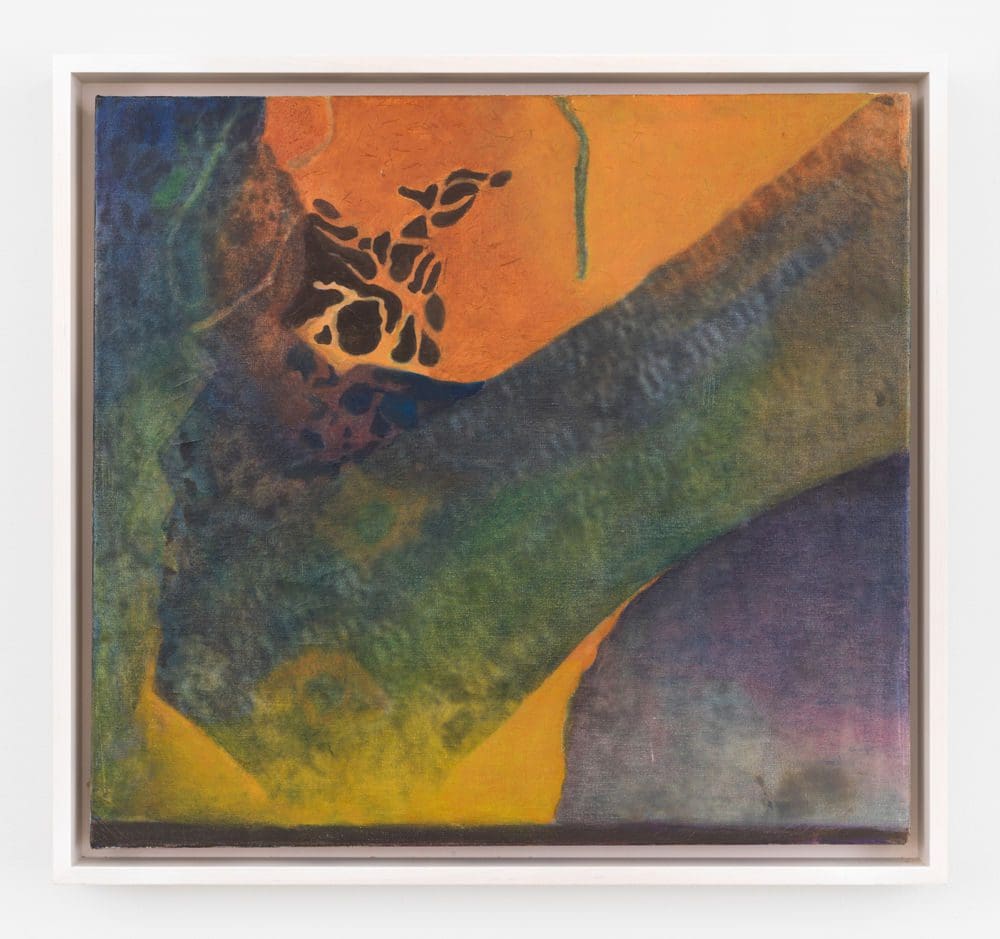
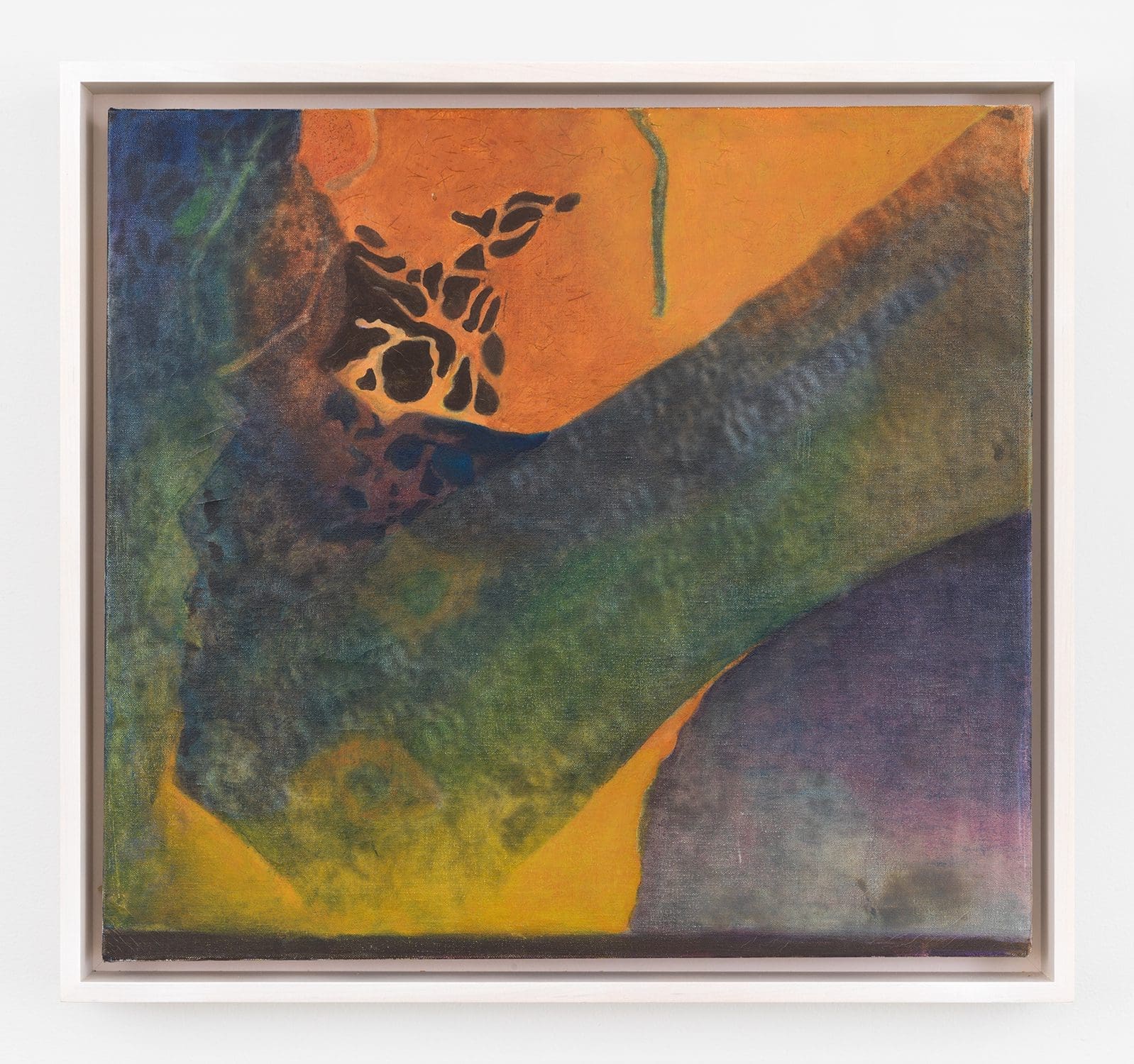

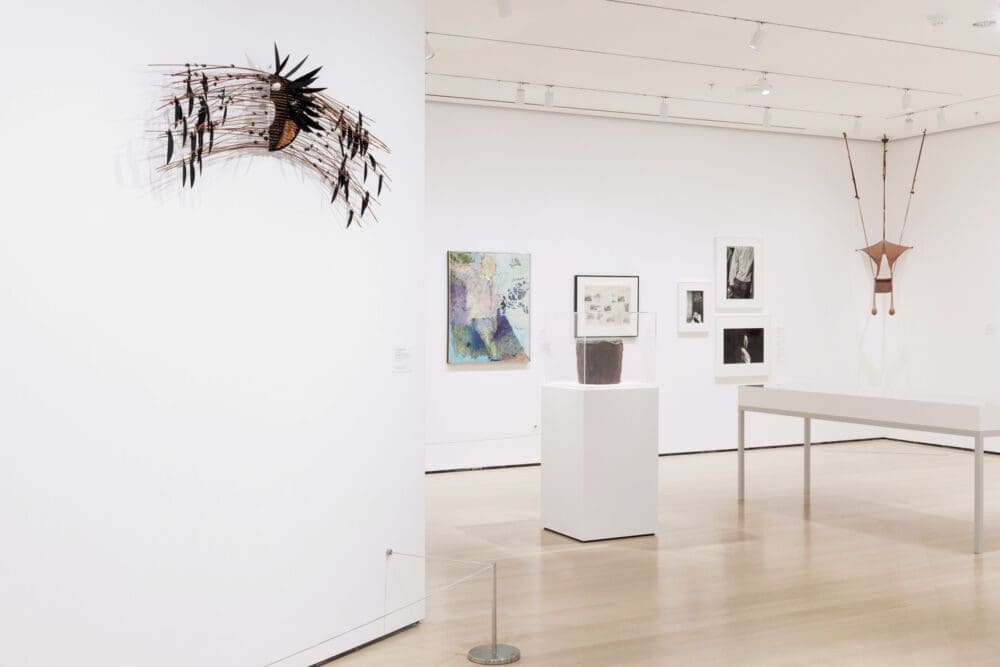



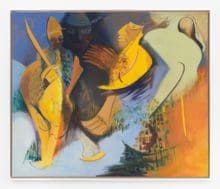
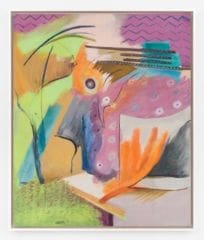



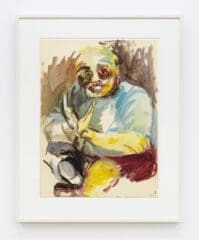
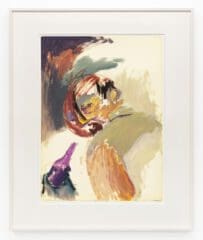
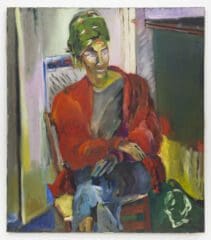
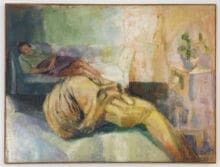
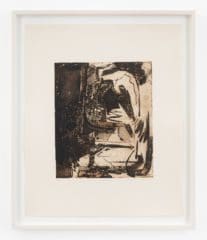
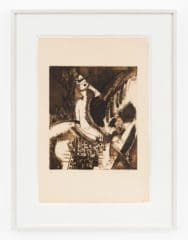
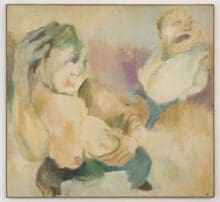
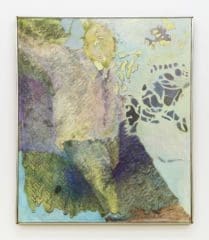
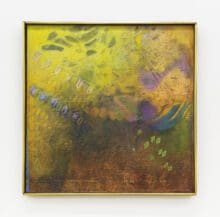
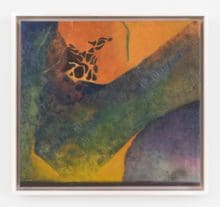

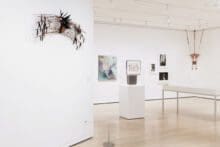



BIOGRAPHY
Vivian Browne (1929 Laurel, FL – 1993 New York, NY) was known for her culturally-critical portraits and abstracted paintings inspired by her travels and socio-political observations. Mindful of her particular experience as an artist, she probed the intersection of misogyny and racism throughout her life and practice. “Black art is political,” Browne said in 1985 to Black American Literature Forum. “If it’s not political, it’s not black art.”
Browne was driven by content over form, and over three decades her work spanned many interests and impulses. She often depicted her friends and contemporaries, including large-scale portraits of Camille Billops and Norman Lewis, but she was particularly compelled by the realistic and even unflattering aspects of humanity. Her first major body of work from the late 1960s, Little Men, incarnates male anger and frustration. Across over 100 paintings and drawings, middle-aged white men—naked or in business suits—suck their thumbs and wave their arms with grotesquely contorted expressions on their faces in a satirical portrait of infantilized white men in positions of power.
She also produced many landscape paintings following a 1964 fellowship at the Huntington Hartford Foundation in Southern California, and produced distinct series on subsequent trips to Nigeria, China and back to California. Her African paintings are a series of abstract landscape works that aim to capture an ancestral land that would always remain somewhat foreign to the American-born artist. Inspired by a trip to Africa in the 1970s, Browne undertook the project of capturing the feeling of her travels in brilliantly colored canvases. These paintings, centered on Browne’s experience of Africa, use the suggestive powers of abstraction to convey her African experiences to anyone, regardless of background, or a person’s ability to even recognize Africa in these paintings.
Browne was a member of the influential feminist collective Heresies, and contributed to its eponymous publication, including serving on the editorial board for its historic 1982 issue, Vol. 4, No. 3 Racism is the Issue. Along with May Stevens, Sylvia Sleigh, and 17 other women artists, Browne served on the board of advisors of the SoHo 20 Gallery on Broome Street in the mid-1970s. She was also on the board of The Feminist Institute, the first women’s art school in New York. She worked with Bob Blackburn’s Printmaking Workshopand contributed to the important portfolio Impressions: Our World, Volume I, 1973–74 alongside Emma Amos, Benny Andrews, Eldzier Cortor, Norman Lewis, Vincent Smith and John Wilson.
Born in Florida and primarily raised in New York, Browne received both a BS and BFA from Hunter College in 1950 and 1959, respectively. She attended the Art Students League for a short time, and in 1972 she studied at the University of Ibadan in Nigeria. From 1971 through 1992, Browne taught at Rutgers University in Newark. She headed the art and design department from 1975 to 1978, and in 1985 she became a professor of contemporary black and Hispanic art, painting and other fine arts courses.
Browne received numerous awards throughout her life, including a MacDowell Colony Fellowship and recognition as a Distinguished Teacher of Art by the College Art Association. In 1986, she was honored by Mayor Koch of New York City for her achievements in the arts, and in 1990, she served as a Fulbright Panelist.
Browne’s first museum retrospective is currently being co-organized by the Phillips Collection, DC and Contemporary Arts Center, OH, slated to open in 2025. In 2022, her work was included in the landmark group exhibition Just Above Midtown, 1974 to the Present at the Museum of Modern Art, NY, a retrospective of the historic Just Above Midtown gallery. Browne was also featured in the Museum of Modern Art’s Art as Verb, a 2-year exhibition which highlighted experimental works from the museum’s collection. In 2018, her work was included in Acts of Art and Rebuttal in 1971 at Hunter College. The show revisited the Black Emergency Cultural Coalition's historic 1971 exhibition that responded to the Whitney Museum’s refusal to appoint a Black curator for their survey Contemporary Black Artists in America.
Browne’s work has also been included in numerous solo and group exhibitions at Pinacoteca de São Paulo, Brazil (2022); Wallach Art Gallery at Columbia University, NY (2022); Featherstone Center for the Arts, PA (2022); Delaware Art Museum, DE (2021); David C. Driskell Center at the University of Maryland, MD (2019); Brooklyn Museum, NY (2017); Albright-Knox Art Gallery, NY (2017); Insitute of Contemporary Art, MA (2017); Robeson Center Gallery, Rutgers University, NJ (1993); and the University of California’s Sesnon Gallery, CA (1985); among other institutions.
Browne’s work is held in numerous public collections including the Arts & Science Center for Southeast Arkansas, AR; the Camille Billops and James V. Hatch archives at Emory University, GA; the Irish Museum of Modern Art, Ireland; John Cotton Dana Library at Rutgers University, NJ; Jule Collins Smith Museum of Fine Art at Auburn University, AL; The Library of Congress, Washington, D.C.; Museum of Modern Art, NY; Petrucci Family Foundation: Collection of African-American Art, Asbury, NJ; Schomburg Center for Research in Black Culture, NY; Smithsonian American Art Museum, Washington, D.C.; Special Collections and Archives, University of California, CA; and the Wadsworth Atheneum, Hartford, CT.
EXHIBITIONS
News
Observer
Day One Highlights from Art Basel Miami Beach 2023
by Nadja Savej
December 7, 2023
Independent
“Too Political”? The Market Catches Up with New York’s Activist Artists
by Margaret Carrigan
August 23, 2023
Penta
Picasso Wasn’t the Only Cubist—Relearning Art History at Independent 20th Century
by Abby Schultz
August 10, 2023
Publications


Friends and Agitators: Emma Amos, Camille Billops, Vivian Browne, and May Stevens 1965 – 1993
155 pages
